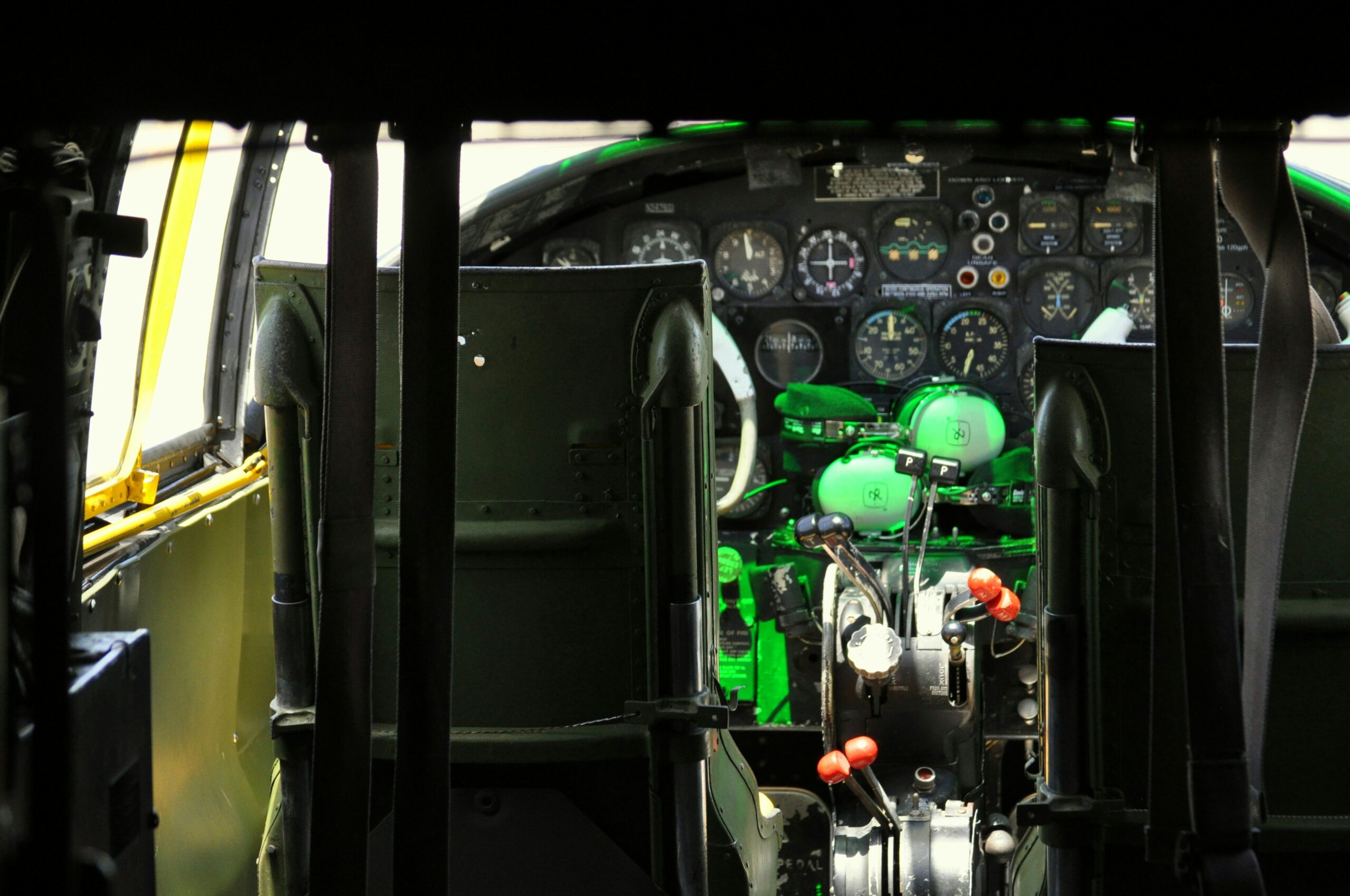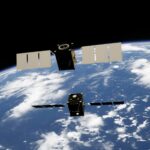The Defense-Aerospace editorial team has confirmed that Lockheed Martin is pressing ahead with the Hybrid Base Station upgrade for its Sniper Advanced Targeting Pod. The move clears a long-standing barrier that limited how much targeting and sensor data an F-35 could pass to other platforms. It also marks a rare case in which a proven external pod, rather than an aircraft’s internal avionics, becomes the core of a wider data-sharing network.
Industry sources say the work reached a key internal milestone on 18 June 2025 when software release 22-5 entered flight verification. That date falls inside a strict two-day window set by the program office for final tests before a live demonstration planned at Eglin Air Force Base later this summer. Defense officials confirm that test jets from the 40th Flight Test Squadron have already flown with prototype pods and exercised the new waveform in a quarantined radio band.
Sniper Targeting Pod Enhancement Enables Secure Stealth Data Relay
The pod now hosts an extra radio, an encryption module approved for Special Access-Required traffic, and a compact processor that runs a translation layer. In practice the change demanded months of work. F-35 mission data loads carry classification levels that exceed the legacy pod’s accreditation. Lockheed Martin therefore built a “gatekeeper” that strips sensitive identifiers before forwarding the track file. The approach keeps the stealth jet’s emissions low because it never raises its own datalink power level. Instead, it sends a narrow beam to the pod, which then rebroadcasts on a Link-16 derivative.
From a pilot’s seat the result feels seamless. A fourth-generation wingman now sees the same track symbols the F-35 sees. The icons arrive in seconds and carry weapon-quality coordinates. No extra cockpit pages appear, and no new switchology is required. Maintenance crews swap the pod’s tail-cone to install the upgrade, run a built-in test, and sign off the jet. The pod does the rest.
Our analysis shows three issues drove the design:
- Security. The F-35 holds the Department of Defense’s most classified sensor data. That data needed real-time downgrading before leaving the jet.
- Stealth. Traditional high-power radios create detectable spikes. The new route uses the pod as an expendable relay, so the F-35 stays silent.
- Cost. Re-certifying every legacy fighter for fifth-gen waveforms would strain budgets. A plug-on pod cuts both time and risk.
Multi-Platform Compatibility of Upgraded Sniper ATP
The Sniper ATP already sits on more than twenty airframes. Crews view it as familiar kit, which reduces training demand. The upgrade turns that same hardware into a network node without touching each host aircraft’s flight program. According to industry sources, the change trims at least twelve months from a typical software integration cycle.
Aircraft that can carry the upgraded pod are:
- Lockheed Martin F-16 Fighting Falcon
- Boeing F-15E Strike Eagle and F-15C Eagle
- Boeing F/A-18 Hornet and Super Hornet families
- Fairchild Republic A-10 Thunderbolt II
- Boeing B-52 Stratofortress
- Rockwell B-1B Lancer
- Eurofighter Typhoon
- Dassault Rafale and Mirage variants
- Korea Aerospace Industries FA-50
- Mitsubishi F-2
The Hybrid Base Station now lets any of those jets pull an F-35’s forward sensor picture and act on it. An F-16 can cue its own weapons or pass the data to a High Mobility Artillery Rocket System battery without human voice calls. Sensor-to-shooter time drops from minutes to seconds. That change matters when targets move fast, hide quickly, or sit inside dense air defenses.
Defense officials confirm that the United States, the United Kingdom, and Norway have signed on as early adopters. Each already flies the F-35 and still operates large fourth-generation fleets. Norway has also asked for a man-in-the-loop safeguard that blocks automatic weapon release unless a pilot accepts the pod’s targeting update. The feature will appear as a software patch before the first export delivery.
Dynamic Mesh Network Redundancy in Pod-Based Datalink
The new datalink uses a dynamic mesh. Every pod becomes both a client and a relay. If one node jams or fails, packets hop to another aircraft or ground gateway. That design borrows from Mobile Ad-hoc Network theory and avoids single points of failure. Program engineers estimate a ten-node formation can tolerate the loss of three nodes while still maintaining near-real-time flow.
Ground units benefit as well. The pod broadcasts an unclassified metadata layer that fires-direction centers can ingest directly. No manual re-keying is needed. Army testers at White Sands Missile Range ran a rehearsal in May. An F-35 over the Gulf of Mexico spotted a surrogate mobile launcher and passed the data through an F-16 to a HIMARS platoon in New Mexico. The launcher replica “died” ninety-three seconds after the Lightning II declared the track.
Coalition Interoperability Boost via Sniper Pod Upgrade
Allied air forces view the pod as a bridge in wider Combined Joint All-Domain Command and Control plans. Many partners cannot afford a full fleet of fifth-gen aircraft yet still want the F-35’s sensor reach. The Hybrid Base Station gives them a near-term path. Several NATO air chiefs told Defense-Aerospace that the pod’s low entry cost supports coalition interoperability better than any bespoke radio upgrade.
On the technical side, the module’s waveform rides in the L-band but sidesteps crowded Link-16 time slots. It uses short burst transmissions, forward error correction, and frequency agility. Radios drop to listen-only mode when the jet crosses a predefined threat ring. The control logic sits in firmware, so crews cannot override the profile in flight. Program security officers demanded that safeguard to protect stealth tactics.
Lockheed Martin adopted a digital engineering approach for the upgrade. All code modules live in a cloud-based repository. Automated test benches push every nightly build to a hardware-in-the-loop rig that mimics both pod and aircraft buses. That pipeline, in place since January, detected a critical buffer-overflow flaw within hours of its introduction and prevented a costly flight retest.
Sustainment planning runs in parallel. The company’s Orlando facility will refurbish existing pods when fighters cycle through depot maintenance. Turnaround is five days dock to dock. A field retrofit kit arrives next year for squadrons that need quicker action. Maintainers replace two circuit cards, load software with a crypto fill cable, and run a one-minute built-in test. No boresight re-alignment is required.
Collaborative Combat Aircraft and Uncrewed Relay Potential
The U.S. Air Force picked up development. Partner nations will pay a fee per pod. Lockheed Martin projects the out-the-door price at under two million dollars, software included. That figure remains well below the cost of upgrading each host jet’s internal avionics.
Operational analysts note a bigger strategic effect: the F-35 can now remain a pure sensor in contested airspace while legacy jets and long-range launchers deliver weapons from standoff positions. The change rewrites tactics, reduces stealth asset exposure, and keeps missile magazines dispersed.
Uncrewed aircraft also stand to gain. The company’s Skunk Works has run lab trials with the pod feeding a loyal-wingman computer stack. If future flight tests succeed, a drone could fly as an extra relay or weapons truck without its own high-grade sensors. That option aligns with Air Force plans for Collaborative Combat Aircraft.
Drone Relay Operations Using Sniper Pod Network Backbone
The team expects to achieve a credible operational capability late this year. Full-rate production starts in 2026. Earliest export deliveries follow one quarter later. The schedule assumes test results stay on track, and officials say current risk remains low.
The Hybrid Base Station does not solve every gap. It cannot pass the most classified electronic support data, nor can it host long-haul beyond-line-of-sight links. It does, however, close the everyday targeting loop that warfighters have demanded since the F-35 entered service. That alone makes the upgrade significant.
In a broader context, the pod demonstrates how add-on systems can extend fifth-generation effects across mixed fleets at modest cost. It signals a shift toward modular, software-centric combat networks where any suitable mount point—be it pod, pylon, or rack—can carry a node.
Defense-Aerospace will monitor the remaining test events and report on first pass rates, integration issues, and user feedback as soon as data becomes available. For now, aircrews and planners gain a practical tool that ties the F-35’s stealth sensor reach to the mass and persistence of legacy fighters and land-based missiles. That synergy stands to raise the ceiling on coalition airpower without demanding new airframes.
REFERENCE SOURCES
- https://aviationweek.com/defense/f-35-partners-eye-targeting-pod-options
- https://thedefensepost.com/2024/07/29/new-sniper-targeting-pod/
- https://www.flightglobal.com/fixed-wing/updated-sniper-pod-to-help-f-35-to-share-data-with-other-aircraft/163478.article
- https://defence-industry.eu/lockheed-martins-sniper-advanced-targeting-pod-proves-precision-against-uas-threats/
- https://www.lockheedmartin.com/en-us/products/sniper.html


